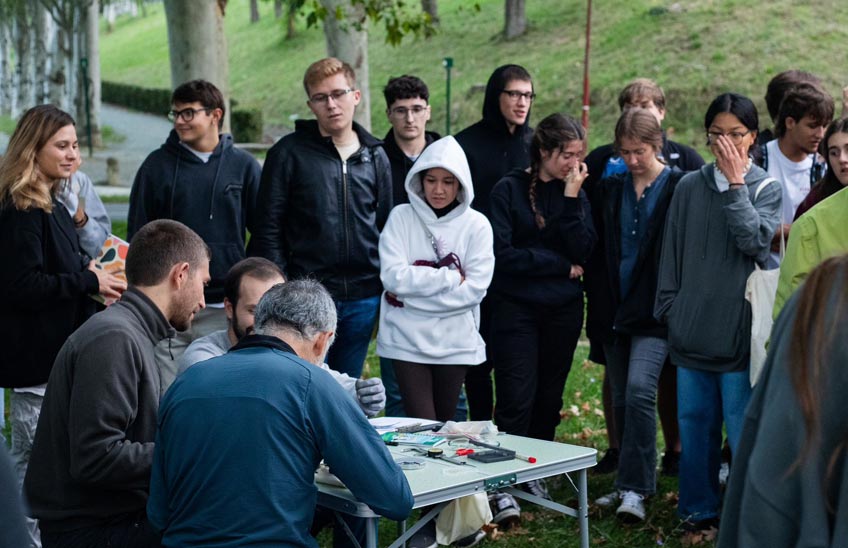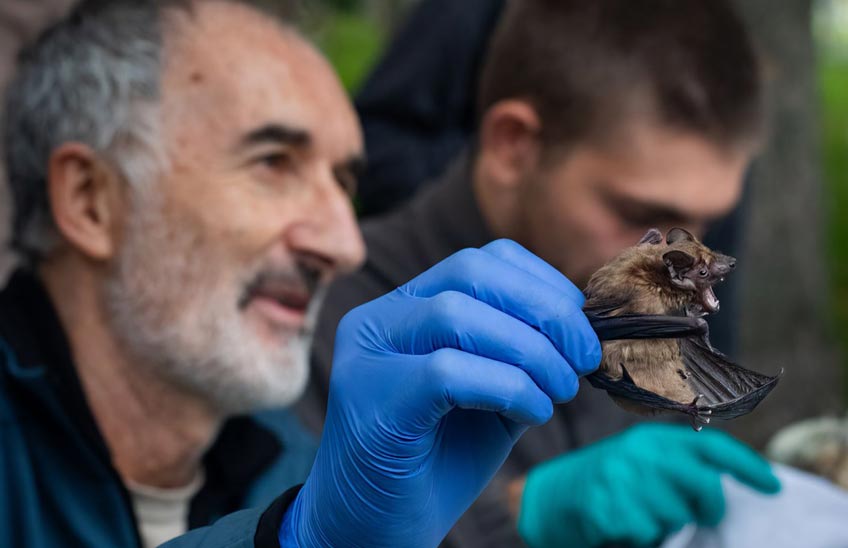Biology and Environmental Science students from the University participate in the monitoring of bats at the university's campus .
The goal of this initiative is the monitoring of these mammals in the Campus, as well as the state of the shelters, within a monitoring plan of the medium-sized cockatoo in the parks of Pamplona, promoted by the Service of Sustainable development of the City Council of Pamplona.

02 | 10 | 2024
The Campus of the University of Navarra has been home to bat roosts and mating boxes for many years. In urban or periurban gardens it is necessary -for safety reasons- to prune or remove old trees and, as a consequence, arboreal bats -such as the medium-sized cockatoo- see the natural shelters where they spend a good part of their time diminished.
In this framework Juan Tomás Alcalde, biologist and president of the Spanishassociation for the Conservation and Study of Bats (SECEMU), accompanied by a group of students of the Degrees of Biology and Environmental Sciences of the University of Navarra, have conducted a count of specimens and colonies in the university Campus , in order to detect specimens in heat and assess the presence of these populations of bats.
"Every year the University collaborates in the replacement of new bat roosts in the Campus, and the presence of this species is evaluated. We are aware of the importance of maintaining the biodiversity of Campus for its intrinsic value and also because a healthy natural environment is also beneficial to humans (One Health)," says Enrique Baquero, professor at School of Sciences at the University of Navarra.
The Campus of the University of Navarra, along with other parks in Pamplona, is home to one of only seven known colonies of an endangered species in Spain, the median cockatoo(Nyctalus noctula). The Pamplona population has suffered a B reduction in recent decades.

Key students in attracting "clicks".
Clicks" are social sounds that bats emit to communicate. These sounds are ultrasonic, that is, they are produced at a higher frequency than adult humans can pick up. However, juveniles have the ability to hear these "clicks".
In the last campaign carried out at the University of Navarra last September 9, the students went to core topic to capture these sounds. "They were of great financial aid and it was possible to detect a possible new grouping area of the species "median cockatoo" that not even the experts would have been able to detect with the financial aid of specialized equipment".
Once these mammals were identified, some females were tagged with chips in order to know their travel routes and to study their migratory behavior over time. The tagging is being carried out as part of a European project, project , led by the Max Planck Institute in Germany, to learn about the migrations of cockatoos throughout Europe.
This initiative has arisen in the framework of the development of the practices of the subjects "Applied Animal Biodiversity" and "Methods in Animal and Plant Diversity", of the Degrees of Biology, Environmental Sciences and of the Double Degree in Biology and Environmental Sciences that is given in the School of Sciences of the academic institution.




